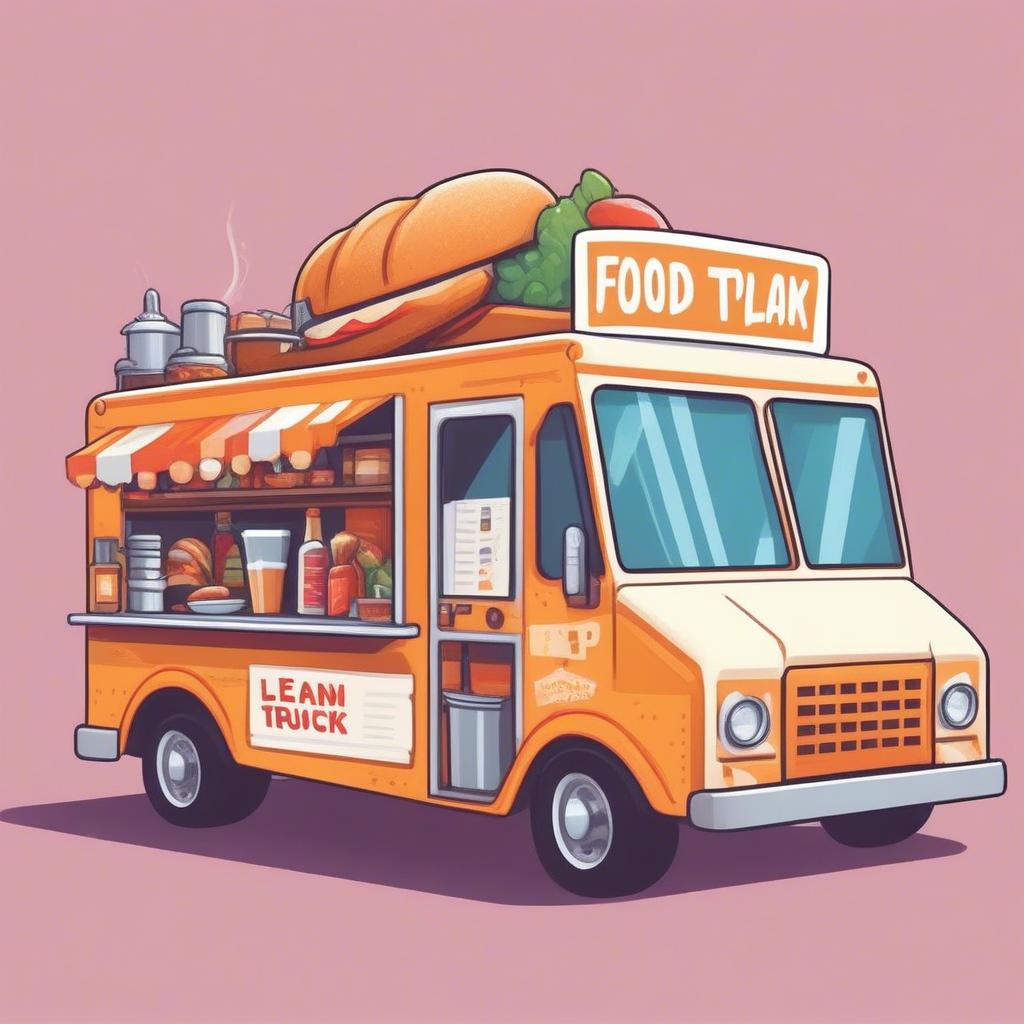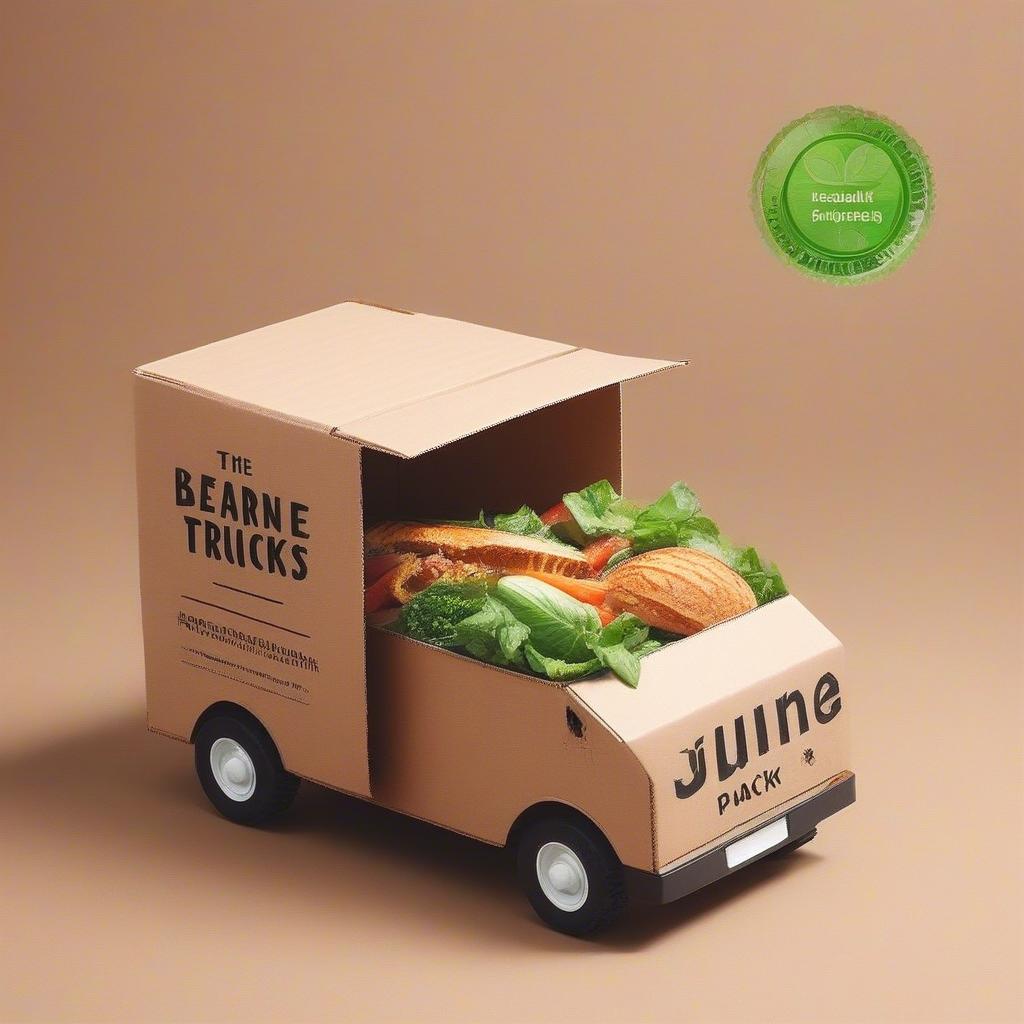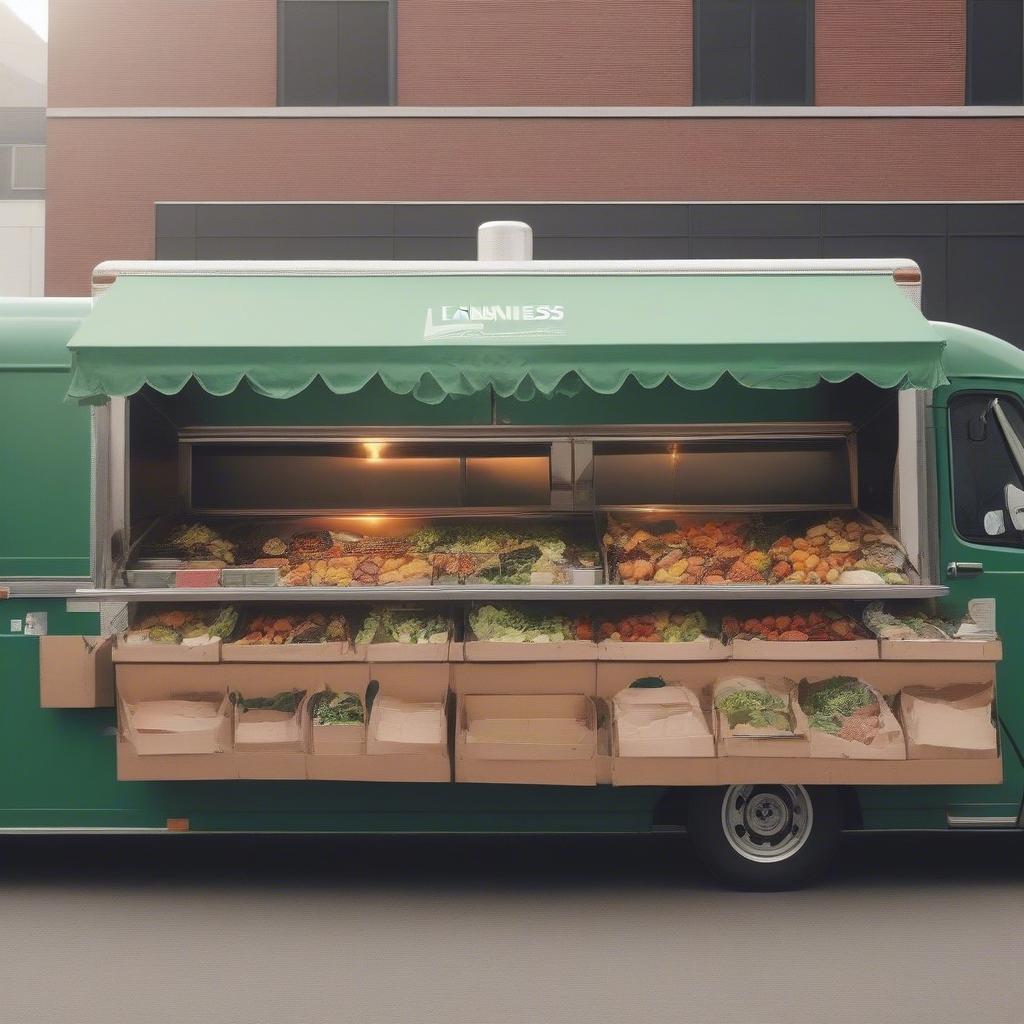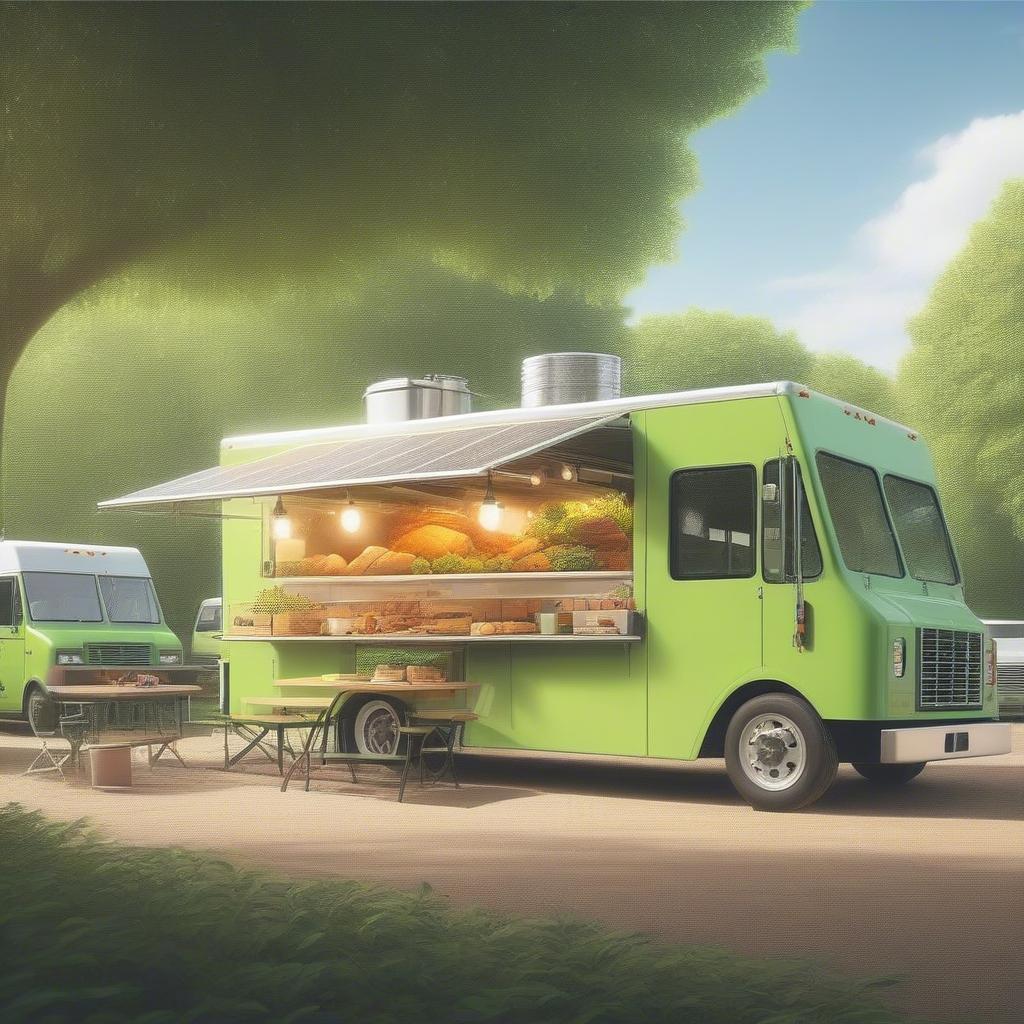
How to Write a Food Truck Business Plan Step-by-Step
Okay, so you’ve got the craving – not just for a killer taco or gourmet grilled cheese, but for the freedom and flavor of owning your own food truck. That dream is sizzling, but before you hit the road, you need a roadmap: a solid, well-crafted food truck plan. Think of it as your GPS, guiding you from kitchen fantasies to culinary reality. This isn’t just paperwork; it’s your compass, your budget, and your secret sauce for success. Let’s dive into how to create a winning business strategy for your mobile munchies.
Step 1: Dream Big, Then Define It – Your Concept & Mission
Before even thinking about axles and ovens, let’s nail down your vision.
What’s Your Food Truck Identity?
- Concept Clarity: What kind of food are you serving? Are we talking gourmet burgers, authentic ethnic cuisine, vegan delights, or decadent desserts? Be specific. "Good food" isn’t a concept; "Artisan wood-fired pizza" is. The more niche, the better you can target your audience.
- Unique Selling Proposition (USP): What makes you different? Is it your family recipe, locally sourced ingredients, a quirky theme, or a lightning-fast service? Identify what sets you apart from the competition. This is the heart of your business strategy.
- Brand Personality: What vibe are you going for? Fun and funky, sophisticated and chic, rustic and down-to-earth? This influences everything from your logo to your menu design. Think of your brand as a person – how would you describe them?
Crafting Your Mission Statement
Your mission is your guiding star. It answers the question: "Why does my food truck exist?"
- Example: “To bring authentic, affordable, and delicious regional Mexican street food to our community using fresh, locally sourced ingredients, creating memorable experiences for our customers."
- Key Elements: Think about your target audience, the problem you’re solving (hunger, the desire for variety), and the positive impact you want to make.
Why This Matters:
A clearly defined concept and mission lay the foundation for all other decisions. It shapes your menu, marketing, and overall brand. Without it, your startup planning becomes chaotic, and your chances of success diminish.
Step 2: Market Research – Know Your Neighborhood
You wouldn’t drive to an unknown destination without a map, would you? The same principle applies to your food truck plan.
Who’s Your Ideal Customer?
- Demographics: Age, income, location, occupation – get specific about who you want to attract. Are you targeting college students, office workers, or families?
- Psychographics: What are their values, interests, and lifestyle? Do they prioritize organic food, convenience, or affordability?
- Customer Needs: What are they looking for in a food truck experience? Is it a quick lunch, a late-night snack, or a unique dining experience?
Analyzing the Competition
- Direct Competitors: Identify other food trucks or restaurants that offer similar food. What are they doing well? Where could they improve?
- Indirect Competitors: Consider other options people might choose instead, like cafes or grocery stores.
- Competitive Edge: How can you offer something better or different? Maybe you specialize in a specific niche, offer superior customer service, or use innovative marketing.
Local Market Analysis
- Location, Location, Location: Research popular areas for food trucks, festivals, events, and high-traffic locations. Consider parking regulations, permits, and accessibility.
- Demand Assessment: Are there enough potential customers in your chosen areas to sustain your business? Are there underserved niches?
- Pricing Strategies: Research competitor prices and determine what you need to charge to remain competitive and profitable.
Why This Matters:
Market research is the backbone of your food truck plan. It helps you identify opportunities, understand your target audience, and refine your business strategy to maximize your chances of success. It’s the difference between guessing and knowing.
Step 3: The Menu – The Heart of Your Food Truck
Your menu is more than just a list of dishes; it’s a reflection of your brand and a key driver of customer satisfaction.
Menu Design Essentials:
- Simplicity is Key: Avoid overwhelming customers with too many options. A concise, curated menu allows for better quality control and faster service.
- Highlight Your Strengths: Focus on your most popular and profitable dishes.
- Pricing Strategy: Consider food costs, labor costs, and desired profit margins when setting prices. Don’t forget to research competitor pricing.
- Seasonal and Special Options: Offer rotating specials or seasonal items to keep your menu fresh and exciting.
- Allergens and Dietary Restrictions: Clearly list ingredients and offer alternative options for customers with allergies or dietary restrictions.
- Menu Descriptions: Use mouthwatering descriptions that highlight the quality and uniqueness of your dishes.
Menu Planning Tips
- Cost Analysis: Carefully calculate the cost of each dish, including ingredients, packaging, and labor.
- Profit Margins: Aim for a healthy profit margin on each item.
- Operational Efficiency: Design your menu to be easy to prepare and serve quickly.
- Test and Iterate: Get feedback from potential customers and be willing to make adjustments.
Why This Matters:
A well-designed menu is crucial for profitability, customer satisfaction, and operational efficiency. It’s a core element of your overall business strategy. This aspect of your food truck plan needs careful consideration.
Step 4: Operational Plan – From Prep to Plate
This is where you move from ideas to action. How will you actually run your food truck?
Equipment Needs
- The Truck: Choose a vehicle that fits your needs and budget. Consider size, functionality, and reliability.
- Kitchen Equipment: Ovens, grills, fryers, refrigeration, prep tables – list everything you need and get accurate cost estimates.
- Serving Supplies: Plates, cutlery, napkins, containers, point-of-sale system, and other customer-facing items.
- Safety Equipment: Fire extinguishers, first-aid kit, and other necessary safety gear.
Sourcing and Inventory Management
- Reliable Suppliers: Establish relationships with suppliers who can provide high-quality ingredients at reasonable prices.
- Inventory Tracking: Develop a system for tracking inventory to minimize waste and ensure you have enough supplies on hand.
- Just-in-Time Inventory: Consider a just-in-time inventory system to minimize storage needs and maximize freshness.
Staffing and Hiring
- Number of Employees: How many staff members will you need to run your food truck effectively?
- Hiring Process: Develop a recruitment process to find qualified and reliable employees.
- Training: Train your employees on food safety, customer service, and your specific menu.
- Payroll and Legal Compliance: Research payroll regulations and ensure compliance with all relevant labor laws.
Daily Operations
- Prep Work: Plan your prep schedule to ensure you are ready for service each day.
- Service Flow: Map out the flow of customers from ordering to receiving their food.
- Cleaning and Maintenance: Implement a cleaning schedule to keep your truck and equipment in top condition.
- Cash Handling and Accounting: Develop a system for handling cash and tracking your income and expenses.
Why This Matters:
A detailed operational plan is crucial for ensuring smooth and efficient daily operations. It’s a critical aspect of startup planning and prevents costly mistakes down the line. The execution of your food truck plan relies on a well-thought-out operational strategy.
Step 5: Financial Projections – Crunching the Numbers
Let’s talk money. This section is crucial for securing funding and understanding the financial viability of your food truck.
Startup Costs
- Truck Purchase or Lease: Estimate the cost of acquiring your food truck.
- Equipment Costs: Include the cost of all kitchen equipment, serving supplies, and safety gear.
- Permits and Licenses: Research the costs of all necessary permits and licenses.
- Initial Inventory: Estimate the cost of your initial food and supply inventory.
- Marketing and Branding Costs: Include expenses for logo design, website development, and initial marketing campaigns.
- Insurance Costs: Factor in the cost of insurance coverage.
- Contingency Fund: Include a buffer for unexpected expenses.
Operating Expenses
- Food Costs: Estimate the cost of ingredients for your menu items.
- Labor Costs: Include salaries or wages for all employees.
- Fuel and Maintenance Costs: Estimate the cost of fuel and maintenance for your truck.
- Marketing and Advertising Costs: Include ongoing marketing and advertising expenses.
- Insurance Costs: Factor in the cost of insurance coverage.
- Utilities: Include the cost of electricity, water, or other utilities.
- Permits and Licenses: Include ongoing permit and license renewal fees.
- Supplies: Estimate the cost of ongoing supplies, like napkins and containers.
Revenue Projections
- Sales Forecasts: Estimate your daily, weekly, and monthly sales based on market research.
- Pricing Strategy: Use your menu prices to calculate potential revenue.
- Sales Channels: Factor in revenue from different sources, such as events, catering, or online ordering.
Profit and Loss Statement
- Summarize Your Financial Data: Combine your revenue projections with your expense estimates to create a profit and loss statement.
- Project Profitability: Analyze your financial data to determine when your business will become profitable.
- Breakeven Point: Calculate the point at which your revenue equals your expenses.
Funding Sources
- Personal Savings: If you have personal savings, this can be a great place to start.
- Small Business Loans: Explore options for small business loans from banks or credit unions.
- Investors: Consider seeking funding from angel investors or venture capitalists.
- Crowdfunding: Platforms like Kickstarter can help you raise funds from the community.
- Grants: Research grant opportunities specifically for food businesses.
Why This Matters:
Financial projections are the heart of your food truck plan. They help you understand the financial viability of your business, secure funding, and make informed decisions. This is a critical component of your overall business strategy. A clear understanding of your finances is essential for the long-term sustainability of your food truck business.
Step 6: Marketing and Sales Strategy – Attracting Hungry Customers
You have the food, now you need the crowd. A well-defined marketing strategy is crucial for attracting customers and building a loyal following.
Branding Essentials
- Logo Design: Create a professional and memorable logo that reflects your brand.
- Color Palette and Typography: Choose colors and fonts that are consistent with your brand’s personality.
- Brand Voice: Develop a tone of voice for your brand that is engaging and consistent across all platforms.
- Brand Story: Share your story with your audience and build a connection.
Online Presence
- Website or Landing Page: Create a simple website or landing page with information about your menu, location, and hours.
- Social Media Strategy: Use social media platforms like Instagram, Facebook, and Twitter to reach your target audience. Post engaging content, including photos and videos of your food.
- Online Ordering: Consider offering online ordering through your website or a third-party platform.
- Email Marketing: Collect customer email addresses and send out newsletters with updates, promotions, and special offers.
Offline Marketing
- Community Engagement: Participate in local events, festivals, and farmers markets.
- Partnerships: Collaborate with local businesses to reach new customers.
- Loyalty Programs: Develop a loyalty program to reward repeat customers.
- Flyers and Posters: Distribute flyers and posters in high-traffic areas.
- Word-of-Mouth Marketing: Encourage satisfied customers to spread the word about your food truck.
Sales Strategies
- Customer Service: Provide exceptional customer service to build a loyal customer base.
- Pricing and Promotions: Develop strategic pricing and promotional offers to attract new customers and incentivize repeat business.
- Location Optimization: Choose strategic locations with high foot traffic and visibility.
- Speed and Efficiency: Ensure fast and efficient service to minimize wait times.
- Gathering Feedback: Regularly ask customers for feedback and make improvements.
Why This Matters:
A strong marketing strategy is vital for attracting customers and building brand awareness. It’s the fuel that keeps your food truck running and growing. This section of your food truck plan should address how you will bring customers to your door (or truck!).
Step 7: Legal and Regulatory Compliance – Playing by the Rules
Navigating the legal landscape is a crucial part of launching your food truck.
Business Structure
- Sole Proprietorship: Simplest form of business, but personal assets are at risk.
- Partnership: Two or more individuals share ownership and responsibility.
- Limited Liability Company (LLC): Offers personal liability protection.
- Corporation: More complex structure with separate legal and tax status.
Permits and Licenses
- Business License: Obtain a general business license from your local municipality.
- Food Handling Permit: Acquire necessary food handler’s permits.
- Mobile Food Vendor Permit: Obtain permits specific to mobile food vendors.
- Health Department Approval: Comply with all health department regulations and inspections.
- Fire Department Approval: Ensure compliance with fire safety codes.
- Zoning Regulations: Confirm that your locations comply with zoning regulations.
Insurance Coverage
- General Liability Insurance: Protects your business against liability claims.
- Product Liability Insurance: Covers liability claims arising from your food products.
- Workers’ Compensation Insurance: Protects your employees in case of work-related injuries.
- Commercial Auto Insurance: Covers your food truck and employees while on the road.
Food Safety Regulations
- Food Handling Procedures: Follow proper food handling procedures to prevent foodborne illnesses.
- Temperature Control: Monitor and maintain proper food temperatures.
- Cross-Contamination Prevention: Implement measures to prevent cross-contamination.
- Sanitation Practices: Adhere to strict sanitation practices.
Why This Matters:
Legal and regulatory compliance protects your business and customers. Ignoring these can lead to fines, closures, and potential legal issues. This element of your food truck plan is absolutely non-negotiable.
Step 8: Putting It All Together – Your Comprehensive Business Plan
Now that you’ve tackled each step, it’s time to compile everything into one cohesive document.
Components of a Business Plan
- Executive Summary: A brief overview of your business concept, goals, and key highlights.
- Company Description: A detailed description of your food truck, mission, and vision.
- Market Analysis: Results of your market research, including target audience and competition analysis.
- Menu Plan: A list of your menu items, pricing, and cost analysis.
- Operational Plan: Details on your equipment, sourcing, staffing, and daily operations.
- Financial Projections: Detailed financial statements, including startup costs, operating expenses, and revenue forecasts.
- Marketing and Sales Strategy: Your plan for attracting customers and generating revenue.
- Legal and Regulatory Compliance: Information on your chosen business structure, permits, licenses, and insurance.
- Appendix: Include any supporting documents, such as menus, permits, and licenses.
Why This Matters:
A comprehensive food truck plan is your blueprint for success. It’s the document you’ll use to secure funding, guide your operations, and track your progress. This final step solidifies your business strategy and sets you on the path to a thriving food truck venture. It’s the tangible result of all the startup planning you’ve done.
Learn Business: Your Partner in Culinary Success
Now, you might be feeling a little overwhelmed, and that’s totally normal. Creating a detailed business plan can be daunting, but you don’t have to do it alone. This is where Learn Business comes in.
Learn Business understands the challenges of starting a new venture. We provide business guidance and templates tailored to specific industries, including food trucks. Our resources can help you:
- Streamline Your Business Plan: Our templates provide a structured framework to help you organize your thoughts and compile your business plan efficiently.
- Gain Industry-Specific Guidance: We offer step-by-step guidance and advice tailored specifically to the food truck industry.
- Save Time and Effort: Our resources save you time and effort by providing pre-built templates and expert guidance.
- Increase Your Chances of Success: By using our templates and guidance, you can create a more robust and effective business plan, increasing your chances of success.
Learn Business is more than just a template provider; we’re a partner in your entrepreneurial journey. We are here to support you every step of the way, from crafting your initial food truck plan to implementing your business strategy. Let us help you turn your food truck dream into a delicious reality.
Conclusion: Your Journey Starts Now
Writing a food truck plan is a significant undertaking, but it’s an absolutely necessary step in launching a successful mobile food business. From defining your concept and researching the market, to crafting your menu, managing operations, and navigating the legal maze, every step plays a crucial role. By following this step-by-step guide and seeking support from resources like Learn Business, you can create a robust plan and set your food truck on the path to success. Remember, your plan is a living document, adapt and adjust as needed, and keep your passion for amazing food at the forefront of everything you do. Your culinary journey is just beginning!



Leave a Reply